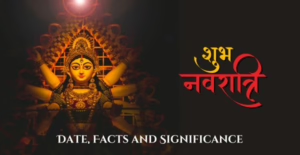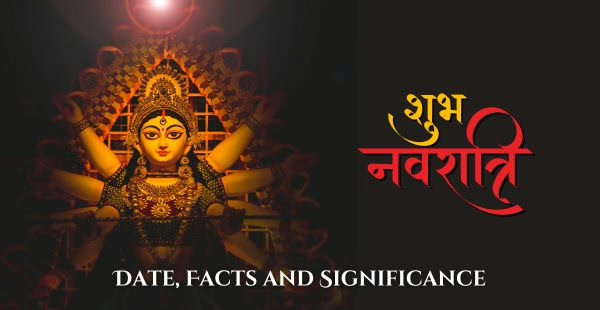
Navratri – Festival of Nine Nights, a vibrant festival celebrated across India, is a time of joy, devotion, and cultural expression. In 2024, this enchanting celebration will bring communities together for nine nights of prayer, dance, and festivity. This blog will delve into the significance of Navratri, its rituals and traditions, how to celebrate in 2024, and delicious recipes to enjoy during the festival.
The Significance of Navratri
Navratri, which translates to “Nine Nights,” is dedicated to the worship of the Hindu goddess Durga. The festival holds profound significance, as it symbolizes the triumph of good over evil, represented by the victory of goddess Durga over the buffalo demon Mahishasura. Each night of Navratri is dedicated to different forms of the goddess, reflecting her multifaceted nature and her role as a protector and nurturer.
Spiritual Meaning
At its core, the significance of Navratri goes beyond mere celebration. It is a time for introspection, devotion, and renewal. Each day encourages participants to engage in spiritual practices, fostering a deeper connection to the divine. Devotees often undertake fasting, prayers, and rituals, allowing them to cleanse their minds and bodies, inviting positivity and blessings into their lives.
Cultural Importance
Culturally, Navratri is a vibrant tapestry of music, dance, and art. Communities come together to celebrate through traditional dance forms like Garba and Dandiya, showcasing the rich heritage of Indian folk traditions. The festival also promotes unity and collaboration among diverse groups, as people from various backgrounds come together in celebration and worship.
Navratri Rituals and Traditions
The rituals and traditions during Navratri are as diverse as the regions in which they are celebrated. Here’s a glimpse into some common practices that embody the essence of this festival.
Setting Up the Golu
In many households, a ‘Golu’ or decorative display of dolls and idols is set up. This practice, especially popular in South India, involves arranging dolls representing deities, mythological characters, and everyday life, symbolizing prosperity and cultural richness.
Daily Worship and Prayers
Each day of Navratri is dedicated to a specific form of goddess Durga, with rituals that include lighting lamps, chanting mantras, and performing aarti (a ritual of worship). Devotees may also recite the Durga Saptashati, a sacred text dedicated to the goddess, invoking her blessings.
Fasting and Dietary Restrictions
Many devotees observe fasting during Navratri, with restrictions on certain foods. This practice, rooted in the belief that fasting purifies the body and mind, often involves a shift to simpler meals. Some may choose to completely abstain from food, while others might consume specific fasting foods.
Community Celebrations
The festival is also marked by communal gatherings, where people participate in Garba and Dandiya nights. These dance forms are not only joyous but also serve as a means of connecting with others, fostering community spirit, and celebrating togetherness.
How to Celebrate Navratri 2024
With Navratri 2024 fast approaching, here’s how you can immerse yourself in the festivities and make the most of this joyous occasion.
Prepare Your Home
Start by cleaning and decorating your home. Many families adorn their spaces with flowers, lights, and colorful fabrics. Setting up a puja (worship) area with images or idols of the goddess is essential. You can also create a Golu display if you wish to embrace this tradition.
Plan Your Fasting
Decide on your fasting routine early on. If you’re fasting, consider incorporating fasting foods that align with your dietary choices. Popular fasting foods include fruits, nuts, and specific flours like buckwheat (kuttu) or water chestnut (singhara). Ensure that you stay hydrated and maintain your energy levels throughout the festival.
Participate in Rituals
Join in the daily rituals and prayers. You can either visit a local temple or create your own space for worship at home. If you have family or friends nearby, invite them to join you in your prayers to enhance the collective energy and devotion.
Engage in Dance and Music
Participate in Garba or Dandiya events organized in your community. These dances are vibrant and energizing, providing an excellent way to connect with others while celebrating the spirit of Navratri. If you prefer, you can also organize a small gathering at home with music and dance.
Enjoy Festive Foods
Navratri is not just about fasting; it’s also a time to enjoy delicious foods that adhere to fasting guidelines. Share your favorite Navratri recipes with family and friends, creating a culinary celebration alongside the spiritual one.
Navratri Recipes and Fasting Foods
Food plays a significant role during Navratri, and there are many delightful recipes to explore. Here are some traditional fasting foods that you can enjoy during the festival:
1. Kuttu Ki Poori (Buckwheat Flour Puri)
Ingredients:
- 1 cup kuttu flour
- Water (as needed)
- Salt (to taste)
- Ghee or oil for frying
Instructions:
- In a mixing bowl, combine kuttu flour and salt.
- Gradually add water to form a soft dough.
- Divide the dough into small balls and roll them out into flat puris.
- Heat ghee or oil in a pan and fry the puris until golden brown.
- Serve hot with yogurt or any fasting-friendly chutney.
2. Sabudana Khichdi (Sago Dish)
Ingredients:
- 1 cup sabudana (sago)
- 2 medium potatoes (boiled and diced)
- 1 teaspoon cumin seeds
- 2 green chilies (finely chopped)
- Salt (to taste)
- Fresh coriander for garnish
Instructions:
- Rinse the sabudana well and soak it in water for about 4-5 hours.
- In a pan, heat ghee and add cumin seeds.
- Add green chilies and diced potatoes, sautéing until they are golden.
- Add the soaked sabudana and mix well. Cook until the pearls turn translucent.
- Season with salt and garnish with coriander before serving.
3. Fruit Chaat (Fruit Salad)
Ingredients:
- Assorted fruits (apple, banana, pomegranate, etc.)
- Lemon juice
- Black salt
- Chaat masala (optional)
Instructions:
- Chop the fruits into bite-sized pieces.
- In a bowl, combine the fruits and sprinkle lemon juice, black salt, and chaat masala.
- Toss well and serve chilled.
4. Singhara Atta Halwa (Water Chestnut Flour Sweet)
Ingredients:
- 1 cup singhara atta
- 1 cup water
- ½ cup jaggery (or sugar, adjust to taste)
- ¼ cup ghee
- Chopped nuts for garnish
Instructions:
- Heat ghee in a pan and add singhara atta, roasting it until golden brown.
- In a separate pot, dissolve jaggery in water and bring to a boil.
- Gradually add the jaggery water to the roasted flour, stirring continuously to avoid lumps.
- Cook until the mixture thickens, and then garnish with chopped nuts before serving.
5. Lassi (Yogurt Drink)
Ingredients:
- 1 cup plain yogurt
- ½ cup water
- Sugar or honey (to taste)
- A pinch of cardamom powder (optional)
Instructions:
- In a blender, combine yogurt, water, sugar/honey, and cardamom powder.
- Blend until smooth and frothy.
- Serve chilled, garnished with a sprinkle of cardamom or crushed nuts.
Conclusion
Navratri 2024 promises to be a vibrant celebration filled with devotion, joy, and togetherness. As you prepare to embrace this Festival of Nine Nights, remember to honor its significance through rituals and community engagement. Whether you’re fasting, dancing, or enjoying traditional foods, each moment spent during Navratri is an opportunity to connect with the divine and with those around you. Celebrate this auspicious occasion with an open heart, and may the blessings of goddess Durga fill your life with peace, prosperity, and happiness.
As we look forward to Navratri 2024, let’s embrace the spirit of this remarkable festival and make it a memorable experience for ourselves and our communities. Happy Navratri!

